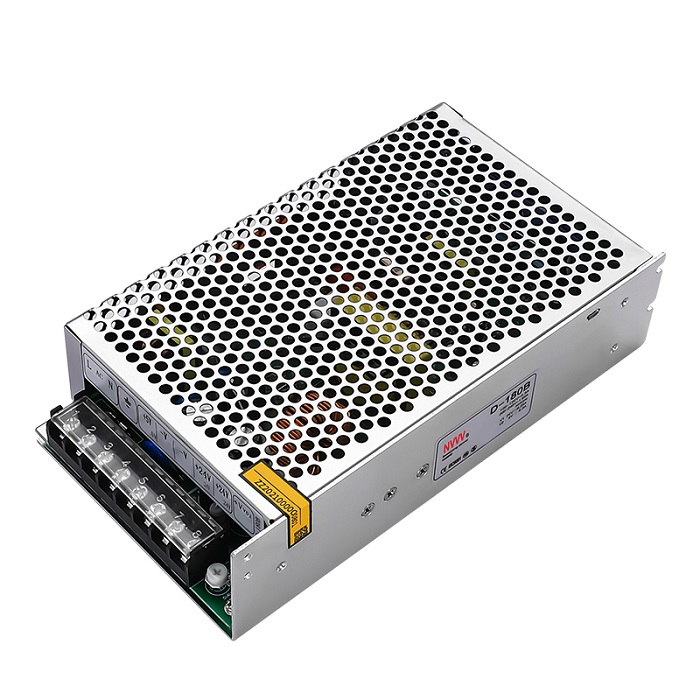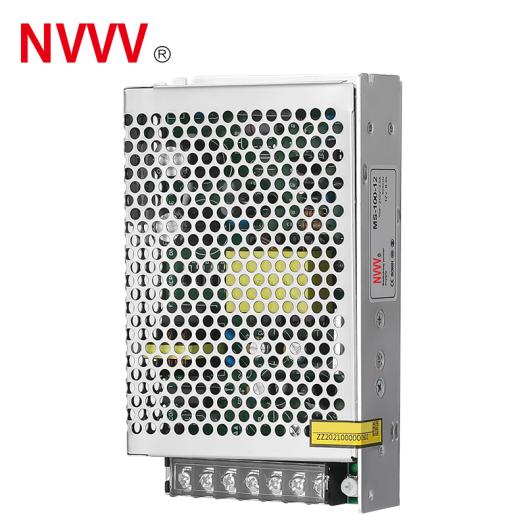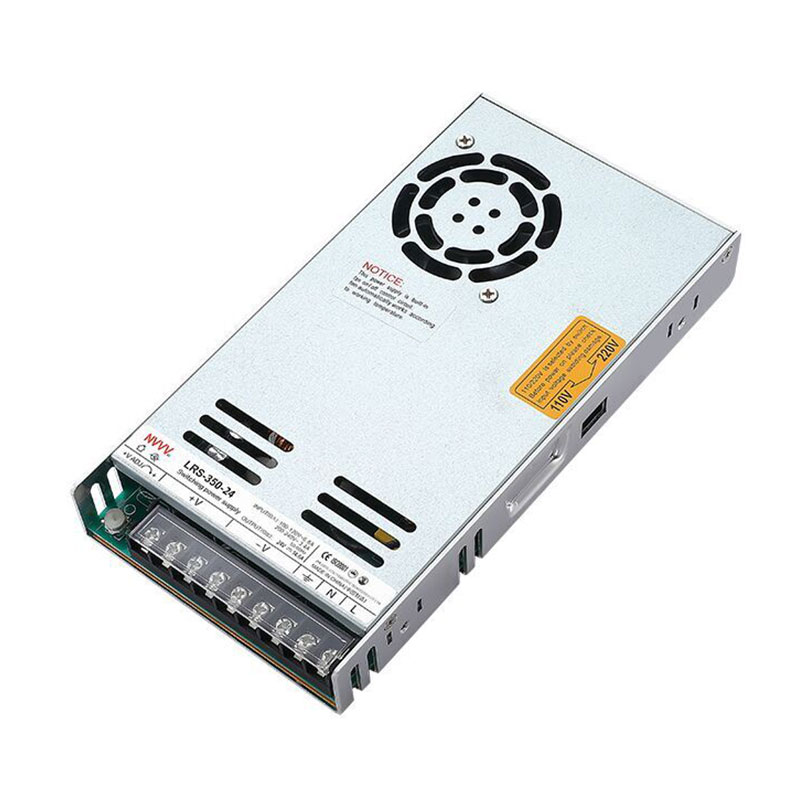How are switch mode power supplies designed and why are they gaining more and more attention?
In modern electronic devices, switch mode power supply (SMPS) and 24V power supply play a vital role. Understanding their basic working principles, key considerations in design, and how to perform performance testing and optimization will not only help improve the efficiency and reliability of the equipment, but also ensure its stability in various application scenarios. In view of this, this article will delve into these core issues to help readers understand them more deeply.
What is the basic working principle of a switched mode power supply (SMPS)?
Understanding switched mode power supply (SMPS)
A switched mode power supply (SMPS) is a power supply device that converts electrical energy into the required voltage and current through switching regulation technology. Compared with traditional linear power supplies, SMPS uses high-frequency switching technology to achieve higher efficiency and smaller size. SMPS is widely used in various electronic devices, such as computers, televisions, communication equipment, and industrial control systems.
Working principle
The basic working principle of SMPS is to quickly switch the input voltage through a high-frequency switching device (such as MOSFET) to convert DC or AC into a high-frequency pulse signal. Then, the voltage is converted through a transformer or inductor, and then a stable DC voltage is output through a filter and a rectifier circuit. The specific steps are as follows:
Rectification and filtering: The input AC voltage (AC) is converted into a DC voltage (DC) through a rectifier, and the DC voltage is smoothed through a filter.
High-frequency switching: The DC voltage is switched through a high-frequency switching device (such as MOSFET) to form a high-frequency pulse signal. The switching frequency is usually between tens of kilohertz and hundreds of kilohertz.
Voltage conversion: High-frequency pulse signals are converted to voltage through transformers or inductors. The turns ratio of the transformer determines the size of the output voltage.
Rectification and filtering: The high-frequency pulse signal is rectified and filtered and converted into a stable DC voltage output.
Feedback control: The output voltage is monitored and adjusted through the feedback circuit to ensure that the output voltage is stable at the set value. The feedback control circuit can make real-time adjustments based on load changes and input voltage fluctuations.
Main features
High efficiency: Due to the application of high-frequency switching technology, the energy conversion efficiency of SMPS is usually between 80% and 90%, which is significantly higher than that of traditional linear power supplies.
Small size and light weight: The use of high-frequency transformers and filtering components greatly reduces the size and weight of SMPS, making it suitable for compact design and portable devices.
Wide input voltage range: SMPS can work stably within a wide input voltage range and adapt to different voltage environments.
High power density: Due to high efficiency and small size, SMPS can provide large power output in a relatively small space.
Reliability and safety: SMPS usually has a variety of protection functions, such as overvoltage protection, overcurrent protection, short circuit protection, etc., to ensure the safety of power supply and load equipment.
Application field
SMPS is widely used in various electronic equipment and systems, including computer power supply, communication equipment, industrial control system, consumer electronics and renewable energy system. Its high efficiency, small size, wide input voltage range and high power density make it the mainstream choice for power supply design of modern electronic equipment.
What key factors should be considered when designing a 24V switch mode power supply?
Voltage and current requirements
When designing a 24V switch mode power supply, the voltage and current requirements of the device must be clarified first. 24V is the output voltage, while the load device may require different currents. The designer needs to determine the rated current of the power supply according to the power requirements of the load device. For example, if the device requires a 24V, 5A power supply, then the power requirement of the power supply is 24V x 5A = 120W. Ensuring that the power supply can provide sufficient current and power is a basic requirement of the design.
Efficiency and heat dissipation
The efficiency of the switch mode power supply directly affects the heat generation and heat dissipation design of the power supply. High-efficiency power supplies can reduce energy loss and heat generation, thereby reducing the size and cost of heat sinks. Designers need to select appropriate switching elements (such as MOSFET, diode) and control circuits to achieve high-efficiency power conversion. In addition, good heat dissipation design (such as heat sink, fan) can ensure that the power supply works stably under high load and prolong its service life.
Electromagnetic compatibility (EMC)
The high-frequency switching operation of the switch-mode power supply is prone to electromagnetic interference (EMI), which affects the normal operation of surrounding electronic equipment. Designers need to take measures to reduce EMI, such as adding filters, electromagnetic shielding, and optimizing PCB layout. In addition, the power supply design also needs to comply with relevant EMC standards and regulations to ensure the electromagnetic compatibility of the product.
Voltage regulation and ripple
Voltage regulation is an important performance indicator of the switch-mode power supply. Designers need to ensure that the output voltage remains stable when the load changes and the input voltage fluctuates. In addition, the ripple (i.e. voltage fluctuation) of the output voltage also needs to be controlled within a certain range to avoid interference with the load equipment. Designers can achieve good voltage regulation and low ripple output by optimizing the control circuit and adding filter capacitors and inductors.
Protection function
In order to improve the reliability and safety of the power supply, designers need to add a variety of protection functions to the power supply design. For example, overvoltage protection can shut down the power supply when the output voltage exceeds the set value to prevent damage to the load equipment; overcurrent protection can limit the current when the output current is too large to protect the power supply and load equipment; short-circuit protection can quickly cut off the power supply when the output is short-circuited to prevent damage to the power supply. In addition, designers can also add overtemperature protection to prevent the power supply from overheating and damage.
Input voltage range
When designing a 24V switch-mode power supply, you need to consider the input voltage range. In general, the input voltage range of the power supply should be as wide as possible to adapt to different voltage environments. For example, designing a power supply that can operate within the input range of 90V to 264V AC can ensure that the power supply can operate stably in different regions around the world. The wide input voltage range design requires the selection of appropriate switching elements and control circuits to ensure that the power supply can work properly under high and low voltages.
Physical size and installation method
When designing a switching power supply, physical size and installation method are also factors that need to be considered. The size of the power supply needs to adapt to the installation space of the equipment, especially in some compactly designed equipment. Designers need to optimize the layout of the power supply, arrange the position of components reasonably, and minimize the volume. In addition, the installation method of the power supply also needs to be considered, such as DIN rail installation, rack installation or wall installation, etc., to ensure that the power supply can be conveniently and safely fixed in the equipment.
Cost and manufacturability
When designing a power supply, cost and manufacturability are also important considerations. Designers need to select components with relatively balanced performance and price to control the overall cost. In addition, the design also needs to consider the manufacturability of production, simplify the production process, improve production efficiency, and reduce production costs. For example, the use of standardized components and modular design can improve the consistency and reliability of production and reduce production difficulty and cost.
Comprehensive consideration
The design of a 24V switching mode power supply requires comprehensive consideration of multiple key factors such as voltage and current requirements, efficiency and heat dissipation, electromagnetic compatibility, voltage regulation and ripple, protection functions, input voltage range, physical size and installation method, cost and manufacturability. Through scientific and reasonable design, an efficient, stable and safe power supply can be achieved to provide reliable power support for various electronic devices.
How to test and optimize the performance of a 24V switch mode power supply?
Test methods
When testing a 24V switched-mode power supply, a variety of test methods and equipment are required to fully evaluate the performance of the 24 volt power supply. Here are some common test methods:
Load test: Use an adjustable load (such as an electronic load) to simulate different load conditions and test the performance of the power supply under different loads. Load testing can help evaluate key indicators such as output voltage stability, ripple, and efficiency of the power supply.
Input voltage range test: Test the performance of the power supply under different input voltage conditions, including the minimum and maximum input voltages. Ensure that the power supply can work stably throughout the entire input voltage range.
Temperature test: Test the performance of the power supply under different ambient temperatures to evaluate the temperature rise and heat dissipation capabilities of the power supply. Temperature testing can help discover potential problems with the power supply in high or low temperature environments.
Electromagnetic compatibility (EMC) test: Use EMC test equipment to measure the electromagnetic radiation and conducted interference of the power supply to ensure that the power supply complies with relevant EMC standards and regulations.
Protection function test: Test the power supply's overvoltage protection, overcurrent protection, short circuit protection, and overtemperature protection functions to ensure that the power supply can effectively protect itself and the load equipment under abnormal conditions.
Optimization methods
Problems found during the test can be optimized by the following methods:
Improve efficiency: select efficient switching components (such as MOSFET, diode), optimize control circuit, and reduce power loss. High efficiency can not only reduce the heat generated by the power supply, but also improve the overall performance.
Reduce ripple and noise: increase output filter capacitors and inductors, optimize PCB layout, and select low-noise components. Reducing ripple and noise helps improve the output quality of the power supply and reduce interference to the load equipment.
Improve heat dissipation design: add heat sinks, use fans, and optimize component layout. Good heat dissipation design can ensure that the power supply works stably under high load and prolongs its service life.
Improve electromagnetic compatibility: add filters, electromagnetic shielding, and optimize PCB layout. These methods can effectively reduce electromagnetic interference and ensure that the power supply meets EMC standards.
Optimize protection functions: adjust the parameters of the protection circuit and use high-reliability protection components. Ensure that the power supply can respond quickly under abnormal conditions to protect the safety of the power supply and load equipment.
Experience in practical applications
In practical applications, designers can optimize based on experience and specific needs. For example, for applications that require high efficiency and low noise, high-frequency, low-loss switching elements and high-quality filter components can be selected; for applications that require high reliability and long life, redundant design and high-quality protection circuits can be used.
Continuous Improvement
Power supply design and testing is a process of continuous improvement. Designers need to constantly track the application of new technologies and new materials, optimize design solutions, and improve product performance. At the same time, the problems and improvement measures found during the test also need to be recorded and summarized to provide reference for subsequent designs.
Comprehensive Consideration
The performance of 24V switch-mode power supplies can be comprehensively evaluated and improved through scientific and reasonable testing and optimization methods. The combination of multiple test methods such as load testing, input voltage range testing, temperature testing, electromagnetic compatibility testing, and protection function testing can help designers discover and solve problems in power supply design and ensure that the power supply works stably, safely, and efficiently under various conditions. Measures such as optimizing efficiency, reducing ripple and noise, improving heat dissipation design, improving electromagnetic compatibility, and optimizing protection functions can significantly improve the overall performance of the power supply and provide reliable power support for various electronic devices.
Conclusion
By systematically understanding the working principle, design points and performance optimization methods of switch mode power supplies, we can significantly improve the overall performance of 24V power supplies. Whether in terms of efficiency, heat dissipation or electromagnetic compatibility, scientific design and testing methods can ensure efficient, stable and safe operation of the power supply. I hope that the insights and methods provided in this article can provide valuable references for your design and application.









